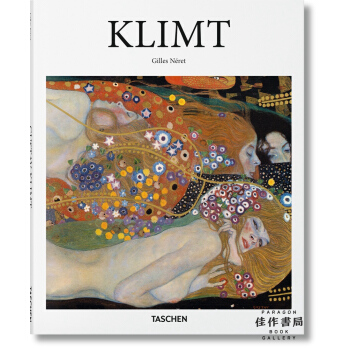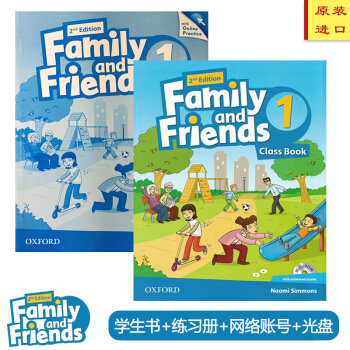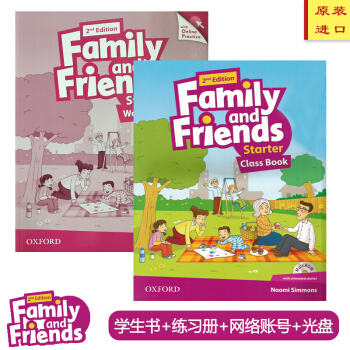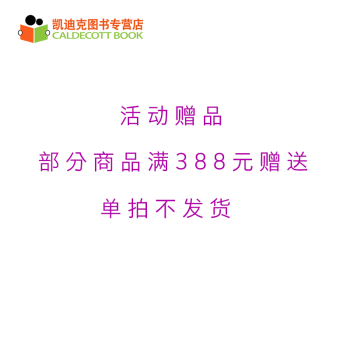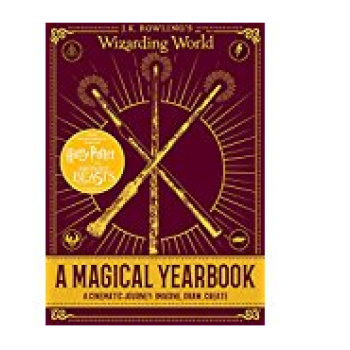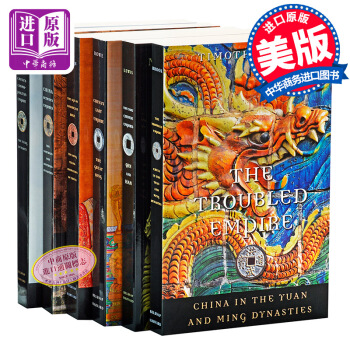

具体描述
哈佛中国史1-6卷套装
第1卷:The Early Chinese Empires: Qin and Han 早期中华帝国:秦与汉
第2卷:China between Empires: The Northern and Southern Dynasties 分裂的帝国:南北朝
第3卷:Chinas Cosmopolitan Empire: The Tang Dynasty 世界性的帝国:唐朝
第4卷:The Age of Confucian Rule: The Song Transformation of China 儒家统治的时代:宋的转型
第5卷:The Troubled Empire: China in the Yuan and Ming Dynasties 挣扎的帝国:元与明
第6卷:Chinas Last Empire: The Great Qing 末代的中华帝国:大清
《哈佛中国史》六卷本丛书,由国际汉学家卜正民教授领衔主编,集结罗威廉、陆威仪和迪特.库恩三位知名汉学家,萃集半个世纪以来西方的中国史研究成果,以史视野、多学科学识颠覆传统中国史叙述模式,倾十年之功写就,是继《剑桥中国史》之后能代表西方半个世纪以来中国史研究全新成果和水准的多卷本中国通史。
《哈佛中国史》丛书站在风起云涌的21世纪,从史角度重写“世界中国史”,引导世界重新思考当下中国。丛书上自公元前221年秦朝一统天下,下至20世纪初清朝终结,分为六个帝国时代——秦汉古典时代、南北朝大分裂、世界性帝国唐朝、宋朝的社会转型、气候变迁影响下元明帝国的兴衰,以及成就斐然的大清王朝,进而串起2000年中华文明跌宕起伏的荣辱命运。
《哈佛中国史》丛书专为普通读者而作,语言生动活泼,文风简明精悍,结构精致合理,极富故事性和启发性,是一套给大众读者的、简洁、清晰、独特的全新中国通史。
《哈佛中国史》丛书出版后获得很多赞誉,被称为“多卷本中国史的黄金标准”,堪称哈佛大学出版社的典范之作,已被芝加哥大学、康奈尔大学、不列颠哥伦比亚大学、香港科技大学、香港城市大学等数十所世界知名大学指定为中国史课程教材。
依据《出版管理条例》,本书个别内容与中国实际情况不符,已做适当处理,但不影响任何整体阅读。此属正常情况,请事先知悉,以免给您带来不便。特此说明。
Early Chinese Empires(History of Imperial China #1)
Author: Mark Edward Lewis, Timothy Brook
Paperback: 336 pages
Publisher: Harvard University Press (1 Oct. 2010)
Language: English
ISBN-10: 0674057341
ISBN-13: 978-0674057340
Product Dimensions: 23.3 x 15.6 x 2.2 cm
Book Description
In 221 bc the First Emperor of Qin unified the lands that would become the heart of a Chinese empire. Though forged by conquest, this vast domain depended for its political survival on a fundamental reshaping of Chinese culture. With this informative book, we are present at the creation of an ancient imperial order whose major features would endure for two millennia. The Qin and Han constitute the 'classical period' of Chinese history - a role played by the Greeks and Romans in the West. Mark Edward Lewis highlights the key challenges faced by the court officials and scholars who set about governing an empire of such scale and diversity of people.
He traces the drastic measures taken to transcend, without eliminating, these regional differences:
* the invention of the emperor as the divine embodiment of the state;
* the establishment of a common script for communication and a state-sponsored canon for the propagation of Confucian ideals;
* the flourishing of the great families, whose domination of local society rested on wealth, landholding, and elaborate kinship structures;
* the demilitarization of the interior; and the impact of non-Chinese warrior-nomads in setting the boundaries of an emerging Chinese identity.
The first of a six-volume series on the history of imperial China, "The Early Chinese Empires" illuminates many formative events in China's long history of imperialism - events whose residual influence can still be discerned today.
China Between Empires: The Northern and Southern Dynasties (History of Imperial China #2)
Author:Mark Edward Lewis, Timothy Brook
Paperback: 352 pages
Publisher: Harvard University Press (1 April 2011)
Language: English
ISBN-10: 0674060350
ISBN-13: 978-0674060357
Product Dimensions: 23.2 x 15.5 x 2.3 cm
Book Description
After the collapse of the Han dynasty in the third century CE, China divided along a north-south line. Mark Lewis traces the changes that both underlay and resulted from this split in a period that saw the geographic redefinition of China, more engagement with the outside world, significant changes to family life, developments in the literary and social arenas, and the introduction of new religions. The Yangzi River valley arose as the rice-producing center of the country. Literature moved beyond the court and capital to depict local culture, and newly emerging social spaces included the garden, temple, salon, and country villa.
The growth of self-defined genteel families expanded the notion of the elite, moving it away from the traditional great Han families identified mostly by material wealth. Trailing the rebel movements that toppled the Han, the new faiths of Daoism and Buddhism altered every aspect of life, including the state, kinship structures, and the economy. By the time China was reunited by the Sui dynasty in 589 ce, the elite had been drawn into the state order, and imperial power had assumed a more transcendent nature. The Chinese were incorporated into a new world system in which they exchanged goods and ideas with states that shared a common Buddhist religion. The centuries between the Han and the Tang thus had a profound and permanent impact on the Chinese world.
China's Cosmopolitan Empire (History of Imperial China #3)
Author: Mark Edward Lewis, Timothy Brook
Paperback: 368 pages
Publisher: Harvard University Press; Reprint edition (3 April 2012)
Language: English
ISBN-10: 0674064011
ISBN-13: 978-0674064010
Product Dimensions: 15.4 x 2.4 x 23.3 cm
Book Description
The Tang dynasty is often called China's "golden age", a period of commercial, religious, and cultural connections from Korea and Japan to the Persian Gulf, and a time of unsurpassed literary creativity. Mark Lewis captures a dynamic era in which the empire reached its greatest geographical extent under Chinese rule, painting and ceramic arts flourished, women played a major role both as rulers and in the economy, and China produced its finest lyric poets in Wang Wei, Li Bo, and Du Fu. The Chinese engaged in extensive trade on sea and land. Merchants from Inner Asia settled in the capital, while Chinese entrepreneurs set off for the wider world, the beginning of a global diaspora.
The emergence of an economically and culturally dominant south that was controlled from a northern capital set a pattern for the rest of Chinese imperial history. Poems celebrated the glories of the capital, meditated on individual loneliness in its midst, and described heroic young men and beautiful women who filled city streets and bars. Despite the romantic aura attached to the Tang, it was not a time of unending peace. In 756, General An Lushan led a revolt that shook the country to its core, weakening the government to such a degree that by the early tenth century, regional warlordism gripped many areas, heralding the decline of the Great Tang.
The Age of Confucian Rule: The Song Transformation of China(History of Imperial China #4)
Author: Dieter Kuhn, Timothy Brook
Paperback: 368 pages
Publisher: Harvard University Press; Reprint edition (4 Oct. 2011)
Language: English
ISBN-10: 0674062027
ISBN-13: 978-0674062023
Product Dimensions: 15.7 x 2.3 x 23.2 cm
Book Description
Just over a thousand years ago, the Song dynasty emerged as the most advanced civilization on earth. Within two centuries, China was home to nearly half of all humankind. In this concise history, we learn why the inventiveness of this era has been favorably compared with the European Renaissance, which in many ways the Song transformation surpassed. With the chaotic dissolution of the Tang dynasty, the old aristocratic families vanished.
A new class of scholar-officials - products of a meritocratic examination system - took up the task of reshaping Chinese tradition by adapting the precepts of Confucianism to a rapidly changing world. Through fiscal reforms, these elites liberalized the economy, eased the tax burden, and put paper money into circulation. Their redesigned capitals buzzed with traders, while the education system offered advancement to talented men of modest means.
Their rationalist approach led to inventions in printing, shipbuilding, weaving, ceramics manufacture, mining, and agriculture. With a realist's eye, they studied the natural world and applied their observations in art and science. And with the souls of diplomats, they chose peace over war with the aggressors on their borders. Yet persistent military threats from these nomadic tribes - which the Chinese scorned as their cultural inferiors - redefined China's understanding of its place in the world and solidified a sense of what it meant to be Chinese. "The Age of Confucian Rule" is an essential introduction to this transformative era. "A scholar should congratulate himself that he has been born in such a time" (Zhao Ruyu, 1194).
The Troubled Empire: China in the Yuan and Ming Dynasties(History of Imperial China #5)
Author: Timothy Brook
Paperback: 336 pages
Publisher: Harvard University Press; Reprint edition (5 Mar. 2013)
Language: English
ISBN-10: 0674072537
ISBN-13: 978-0674072534
Product Dimensions: 23.5 x 16 x 2.2 cm
Book Description
The Mongol takeover in the 1270s changed the course of Chinese history. The Confucian empire--a millennium and a half in the making--was suddenly thrust under foreign occupation. What China had been before its reunification as the Yuan dynasty in 1279 was no longer what it would be in the future. Four centuries later, another wave of steppe invaders would replace the Ming dynasty with yet another foreign occupation. "The Troubled Empire" explores what happened to China between these two dramatic invasions.
If anything defined the complex dynamics of this period, it was changes in the weather. Asia, like Europe, experienced a Little Ice Age, and as temperatures fell in the thirteenth century, Kublai Khan moved south into China. His Yuan dynasty collapsed in less than a century, but Mongol values lived on in Ming institutions. A second blast of cold in the 1630s, combined with drought, was more than the dynasty could stand, and the Ming fell to Manchu invaders.
Against this background--the first coherent ecological history of China in this period--Timothy Brook explores the growth of autocracy, social complexity, and commercialization, paying special attention to China's incorporation into the larger South China Sea economy. These changes not only shaped what China would become but contributed to the formation of the early modern world.
China's Last Empire(History of Imperial China #6)
Author:William T.Rowe, Timothy Brook
Paperback: 368 pages
Publisher: Harvard University Press; Reprint edition (4 Sept. 2012)
Language: English
ISBN-10: 0674066243
ISBN-13: 978-0674066243
Product Dimensions: 23.4 x 15.5 x 2.5 cm
Book Description
In a brisk revisionist history, William Rowe challenges the standard narrative of Qing China as a decadent, inward-looking state that failed to keep pace with the modern West. The Great Qing was the second major Chinese empire ruled by foreigners. Three strong Manchu emperors worked diligently to secure an alliance with the conquered Ming gentry, though many of their social edicts - especially the requirement that ethnic Han men wear queues - were fiercely resisted.
As advocates of a "universal" empire, Qing rulers also achieved an enormous expansion of the Chinese realm over the course of three centuries, including the conquest and incorporation of Turkic and Tibetan people in the west, vast migration into the southwest, and the colonization of Taiwan. Despite this geographic range and the accompanying social and economic complexity, the Qing ideal of "small government" worked well when outside threats were minimal.
But the nineteenth-century Opium Wars forced China to become a player in a predatory international contest involving Western powers, while the devastating uprisings of the Taiping and Boxer rebellions signalled an urgent need for internal reform. Comprehensive state-mandated changes during the early twentieth century were not enough to hold back the nationalist tide of 1911, but they provided a new foundation for the Republican and Communist states that would follow. This original, thought-provoking history of China's last empire is a must-read for understanding the challenges facing China today.
About the Author
Mark Edward Lewisis Kwoh-Ting Li Professor in Chinese Culture, Stanford University.
Timothy Brookis Professor of History at the University of British Columbia.
Dieter Kuhn is Professor and Chair of Chinese Studies, University of Wurzburg.William T. Rowe is John and Diane Cooke Professor of Chinese History at Johns Hopkins University.
用户评价
这套书的阅读体验,与其说是在学习历史,不如说是在进行一场跨越时空的对话。作者的行文风格极其富有韵律感,即使是讨论最枯燥的税赋制度或土地丈量方法,也能写出一种近乎散文诗的美感。最让我印象深刻的是,它成功地在“帝制”这一核心框架下,展现了中国历史内部的巨大张力与活力。它清晰地揭示了,支撑起这个庞大帝国的,从来不是冰冷的铁律,而是代代相传的文官精英的士大夫精神,是儒家伦理在日常生活中的不断实践与修正。每当读到关键转折点,比如某一朝代的终结与新秩序的建立,作者总能精准地捕捉到那种“旧的框架正在崩塌,新的秩序尚未完全成型”的微妙时刻,那种历史的张力,透过纸页都能清晰地传递出来。这是一次对中华帝国长达两千多年演变史的深度巡礼,每一卷都像是一次精心策划的主题展,让人流连忘返,回味无穷。
评分对于习惯了国内传统史学叙事风格的读者来说,这套书带来的冲击力是颠覆性的。它的视角无疑是更“外在”的,但这种“外在”恰恰提供了一种稀缺的、置身事外的清晰度。它审视中国历史进程的目光,既保持了对文本的敬畏,又充满了现代学术的批判性精神。特别是在分析清代中后期的衰落时,它没有将所有责任都归咎于某一个昏庸的皇帝或某一个僵化的制度,而是将目光投向了全球环境的变化、内部的财政压力、以及文化对技术革新的接受度等多个变量的综合作用。这种多因解释,拒绝了单一化和宿命论,使得历史的进程显得更加真实和复杂难解。我感觉自己像是站在一座高塔之上,俯瞰着数千年风雨飘摇的中华帝国,其兴衰的逻辑似乎变得可以被辨识,但其命运的偶然性也同样令人唏嘘。
评分这本书的宏大叙事结构和细致入微的微观分析之间的平衡掌握得炉火纯青,这是我作为一个历史爱好者最推崇的一点。它成功地避开了那种“面面俱到但缺乏重点”的陷阱。例如,在论述明代海禁政策的经济后果时,作者不仅仅停留在贸易额的增减上,而是深入剖析了这种政策如何影响了东南沿海的社会阶层流动、宗族势力的演变,乃至最终如何为后来的白银流入和资本积累埋下了伏笔。这种跨学科的视野令人耳目一新,仿佛历史不再是孤立的事件链条,而是一个紧密相连的生态系统。我特别欣赏它在处理边疆问题和民族关系时的审慎态度,没有简单地贴上“同化”或“征服”的标签,而是展现了不同群体之间复杂的互动、妥协与冲突,让历史人物和事件都带上了多维度的色彩。读完相关章节,对中国历史核心区域与边缘地带关系的理解,可以说是上升到了一个新的高度。
评分这部鸿篇巨制,简直是打开了另一扇通往古代中国的窗户。我刚翻开第一卷,就被那种沉浸式的叙事给牢牢抓住了。它不是那种干巴巴的教科书式罗列,而是充满了鲜活的细节和深刻的洞察力。作者的笔触细腻得令人惊叹,无论是描绘早期王朝的筚路蓝缕,还是秦汉帝国如何通过一系列看似微小的制度创新,最终将广袤的土地和复杂的人口整合起来,都写得入木三分。比如,他们对郡县制和中央集权官僚体系的形成过程的梳理,简直就是一部精彩的政治人类学案例研究。我尤其欣赏作者如何将宏大的历史进程与具体的社会生活层面联系起来,你仿佛能闻到那个时代集市上的喧嚣,感受到普通民众在王朝更迭中的挣扎与适应。读起来,完全不像是在啃一部学术巨著,更像是在听一位博学多识的长者,用最引人入胜的方式,讲述他亲身经历过的那些波澜壮阔的往事。那种对历史脉络的精准把握和对文化基因的深刻挖掘,让人在合卷之后,仍然需要时间来消化和回味。
评分我一直认为,要真正理解一个文明,必须深入其思想和艺术的内核。这套书在这方面做得极为出色,它没有仅仅停留在权力更迭的表象。当我读到关于魏晋南北朝那段“五胡乱华”与玄学兴起的章节时,那种冲击力是无与伦比的。它将那个时代的混乱、士人的清谈、以及佛教的传入与本土思想的碰撞,描绘得淋漓尽致。你看到的是一个文明在巨大压力下如何自我重塑、如何吸收外来元素并最终孕育出唐宋时期那种高度成熟和自信的文化形态。作者对文学、哲学、宗教的论述,绝非旁支末节的点缀,而是驱动历史车轮的关键动力。他们清晰地指出,这些精神层面的探索,如何反过来塑造了后世的政治伦理和社会结构。坦白说,读完关于宋代理学的讨论,我才真正理解了“存天理,灭人欲”这句话背后深藏的哲学重量和对社会规范的约束力,这比我在其他任何历史著作中读到的都要透彻和立体。
相关图书
本站所有内容均为互联网搜索引擎提供的公开搜索信息,本站不存储任何数据与内容,任何内容与数据均与本站无关,如有需要请联系相关搜索引擎包括但不限于百度,google,bing,sogou 等
© 2025 book.coffeedeals.club All Rights Reserved. 静流书站 版权所有


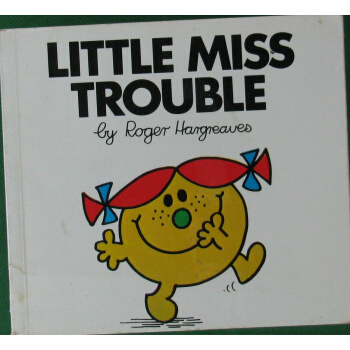


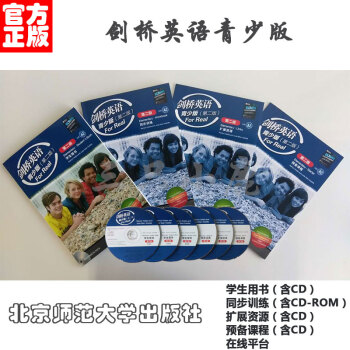


![英文原版 Mia 米娅8册 [4-8岁] pdf epub mobi 电子书 下载](https://pic.windowsfront.com/25357973785/5a9631e1N76540852.jpg)

